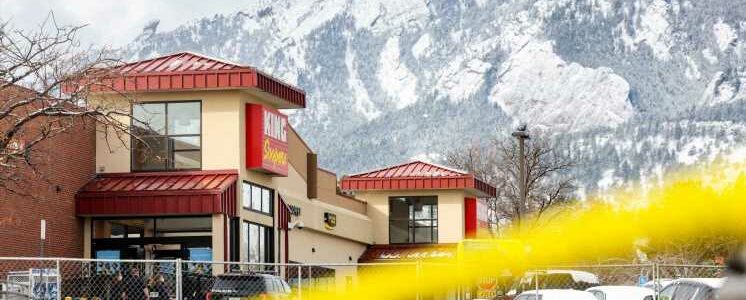
You’re right to be confused about the number of mass shootings
“Two mass shootings in less than a week…” was how CNN’s Chief White House Correspondent Kaitlan Collins introduced her live report about President Biden’s remarks following the recent massacre at a Boulder, CO supermarket. Meanwhile, the CNN website featured a story beneath the attention grabbing headline, “The Colorado attack is the 7th mass shooting in 7 days in the US.”
The stark inconsistency in these two statements about the prevalence of mass shootings is not just a function of different platforms — CNN on air versus CNN online — promoting a mixed message. Discrepancies in how the scope of the problem is characterized can be found at the same news outlet.
According to The New York Times, mass shootings occurred twice in the past week, but then also at the rate of one a day. Of course, these wildly varying assertions were published on separate occasions.
Contradictory data and tallies of shootings
Also, seemingly contradictory tallies are sometimes cited by different journalists from the same outlet. For example, this paper carried the news about two mass shootings in less than a week while previously another reporter wrote on the more mass shootings than days theme.
These inconsistencies boil down to which definition and which data source are used for context. By the definition established decades ago, a mass shooting is the killing of at least four victims from gunfire. Such incidents take place, on average, about two dozen times per year, according to the Associated Press/USA TODAY/Northeastern University mass killing database (of which I am one of the principals). There has been little change in frequency over the past couple of decades except for a spike up to 33 in 2019.
King Scoopers grocery store on March 24, 2021, in Boulder, Colorado. (Photo: Michael Ciaglo/Getty Images)
As an alternative, in 2013 the Gun Violence Archive (GVA) started tracking mass shootings defined very differently. Since nothing in the phrase “mass shooting” implies death, the GVA adopted the definition of four or more victims shot but not necessarily killed. These episodes occur hundreds of times a year, even several times in a day.
The information provided by the Gun Violence Archive is undoubtedly of great value. Unfortunately, the GVA counts of mass shootings are frequently invoked to try and portray a horrific thing (such as the Boulder massacre) as commonplace — the “new normal” as some contend.
I do not mean to ignore the awful suffering that comes from gunshot wounds, but death is different. Conflating fatalities with injuries, some of which may actually be minor, can be terribly misleading. Nearly half of the GVA mass shootings resulted in no fatalities, and less than one-quarter involved multiple deaths. Only about 7% reached the threshold of a mass killing (at least four victim fatalities).
Shootings: What Boulder shooting means for the future of the NRA
Mass confusion arises when figures associated with the broadest notion of mass shooting are referenced when reporting on an incident of much greater severity. For example, in the wake of a 2015 mass shooting in Oregon that resulted in nine fatalities and 20 additional injuries, the Washington Post ran a story indicating that there had been 294 mass shootings in just 274 days of the year to that point. The piece included a calendar of daily counts of mass shootings showing a few days with as many as five cases.
Counting based on injuries or deaths?
A corollary concern, besides whether the threshold is based on deaths or injuries as well, is the varying nature and location of mass shootings. The Gun Violence Archive’s data include a large share of family shootings in private residences as well as gun battles related to gang conflict or illicit drug trade. The 611 total cases for 2020 sounds rather scary, but very few were of the type that people fear the most.
What truly frightens folks are the seemingly indiscriminate and deadly shootings in public locations — a restaurant, shopping mall, theater, church, school, and now supermarket. Such dreadful events can happen to anyone, at any time, and without warning. That is why as many as one-third of Americans say they avoid certain public places out of concern for falling victim in a mass shooting.
Boulder shooting: Senators have no excuse for inaction on guns. Tell them to save lives.
When it comes to deadly mass shootings in public places, such as the recent massacres in Colorado and Georgia, these rampage killings with four or more fatalities happen, on average, fewer than a half-dozen times per year, reaching a peak of ten in 2018. Altogether these mass public shootings claim, on average, about 50 lives annually. Of course, one fatality is one too many, but in a population of more than 330 million, the risk of being killed in a deadly and indiscriminate massacre is exceptionally low, hardly justifying avoidance of public spaces and venues.
James Alan Fox is the Lipman Professor of Criminology, Law and Public Policy at Northeastern University, a member of the USA TODAY Board of Contributors, and co-author of “Extreme Killing: Understanding Serial and Mass Murder.” Follow him on Twitter @jamesalanfox
You can read diverse opinions from our Board of Contributors and other writers on the Opinion front page, on Twitter @usatodayopinion and in our daily Opinion newsletter. To respond to a column, submit a comment to [email protected].
Source: Read Full Article
